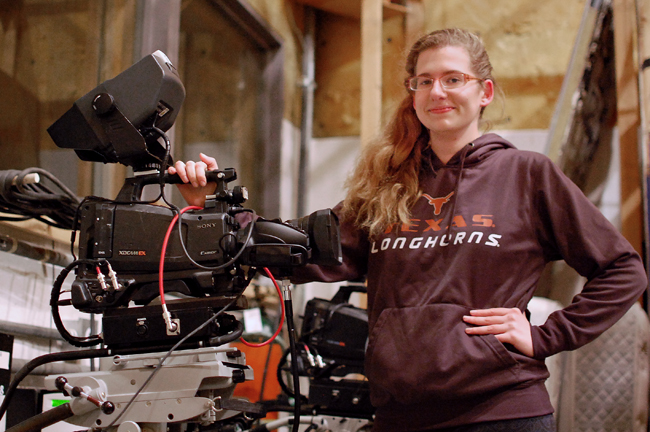The Moody College of Communication is at the forefront of 3-D filmmaking because of the UT3D program, one of the only collegiate 3-D filming programs in the United States.
Although 3-D filming is associated with Hollywood special effects, the UT3D program is interested areas beyond entertainment, according to UT3D program director Don Howard. These areas include virtual reality, educational technology and scientific research.
“Our view of what 3-D is is a variety of new technologies that try to become more immersive than two dimensions on a screen can do,” Howard said.
These technologies use stereoscopy to create depth on a screen, creating a 3-D effect. Stereoscopy is achieved by filming with two cameras from two different angles and projecting both pictures onto a single screen. The viewer processes the image using 3-D glasses to create the
final image.
“Polarized glasses allow one picture to appear to [the left eye] and the other picture to appear to [the right eye] only,” Howard said. “What it does is sort of deconstruct that double picture you’re looking at and … in effect, your eyes will read it the way they read two different pictures all the time.”
Students complete two required courses in the program and an associated internship or special project course to receive a certificate of completion. Unlike other certificate programs offered by the University, however, UT3D is only available to RTF majors.
“These [students] are probably the most well trained 3-D individuals outside of Hollywood at this point,” said Buzz Hays, lead instructor of UT3D. “We’ve given them the fundamental skills to go forth and do amazing things.”
Olivia Biehle, mathematics and radio-television-film senior who is in the 3-D program, is using the program’s technology in a new way by incorporating math to logically approach the 3-D creative process.
“3-D was the first time I was actually able to use my math brain in a creative way,” Biehle said. “I could use my math side of my brain to actually make decisions based on the cameras — how the 3-D was being used.”
3-D film brings a new aspect to the field that 2-D film is unable to achieve, according to Biehle.
“That’s what I’ve seen in 3-D — it’s something that will affect your audience emotionally and psychologically, and they won’t notice it a lot of the time,” Biehle said. “There’s more to 3-D than entertainment value.”












